- Sabrina Stanley
- NSF NOYCE LIST Scholars Program Graduate Research Assistant
- Developing Leaders in Science Teaching (LIST)
- https://list.ua.edu/
- University of Alabama
- Haley Harville-York
- STEM Teacher
- Developing Leaders in Science Teaching (LIST)
- https://list.ua.edu/
- Guntersville High School
- Cynthia Sunal
- Department Head
- Developing Leaders in Science Teaching (LIST)
- https://list.ua.edu/
- University of Alabama
- Dennis Sunal
- Professor, Science Education
- Developing Leaders in Science Teaching (LIST)
- https://list.ua.edu/
- University of Alabama
- Rachael Tawbush
- Graduate Assistant & NSF NOYCE LIST Scholarship Program Coordinator
- Developing Leaders in Science Teaching (LIST)
- https://list.ua.edu/
- University of Alabama
Public Discussion
Continue the discussion of this presentation on the Multiplex. Go to Multiplex





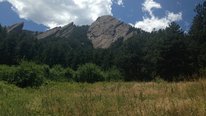
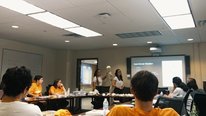
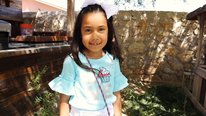
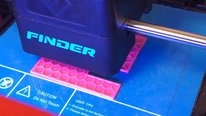
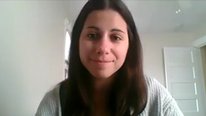
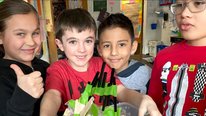
Sabrina Stanley
NSF NOYCE LIST Scholars Program Graduate Research Assistant
Welcome and thank you for taking the time to view the University of Alabama Developing Leaders in Science Teaching (LIST) video. In this COVID-19 new world, we need science teacher leadership. LIST scholars are being prepared to work as teacher leaders in their schools and school districts to make science teaching more accessible and effective. Our model is based on a strong master’s degree program focused on enhancing collaborative experiences through pre-service and in-service professional learning communities (PLCs).
Our team is interested in your feedback, especially regarding the following questions:
https://list.ua.edu/
A significant increase in reformed teaching practices were found with LIST Fellows in their science classrooms. See a summary of the LIST data results in the recent Southeastern Universities Graduate Research Symposium (SUGRS) conference presentation.SUGRS Conference Presentation
Leadership training milestones are reviewed in the SUGRS Conference Presentation link. Some of the leadership characteristics/qualities we strive to develop in the LIST program are reformed teaching practices, leading PLC meetings, teaching and mentoring novice teachers, and co-leading graduate courses. Based on LIST survey data, scholars attributed financial benefits, ongoing induction and professional development opportunities for continuing in their teaching positions and leadership roles.
Rachael Tawbush
Catherine Jones
Thank you for sharing and for mentoring preservice and in-service science teachers. If you don't already have a partnership with AMSTI/ASIM, please contact Sara McGee at smcgee@ua.edu.
Rachael Tawbush
Sabrina Stanley
NSF NOYCE LIST Scholars Program Graduate Research Assistant
Thank you for your response. We greatly appreciate the hard work and effort of our Alabama Science in Motion (ASIM) and Alabama Math & Science Technology Initiative (AMSTI) representatives. We partnered with ASIM in assisting with PASCO bundle sensor training for the LIST Fellows and worked with our AMSTI/ASIM specialists to ensure they received training on AMSTI/ASIM equipment for their science classrooms.
Dennis Sunal
Professor, Science Education
1. This collaborative model has the potential to be adapted/adopted in most universities.
2.Inclusion of many stakeholders in the university and in the school stysems where the fellows serve as in-service teachers.
3. The next few years will be uniquely different due to current and near future changes experienced by students, parents, voters, and teachers. Scienc eteacher leaders are needed to implement and lead change in science teaching.
Rachael Tawbush
Ann Cavallo
Assistant Vice Provost and Director, Center for Research on Teaching and Learning Excellence
The videos show some indication, but do you also have data beyond the videos that shows the impact (e.g. numbers) of your program on moving from mentored novice to teacher leaders? What kinds of leadership characteristics/qualities did you strive to develop in your program? Have you noted any improvements in teacher retention among your novice teachers that you can attribute to the program? Thanks!
Michael I. Swart
Rachael Tawbush
Rachael Tawbush
Graduate Assistant & NSF NOYCE LIST Scholarship Program Coordinator
Thank you for your response. A significant increase in reformed teaching practices were found with LIST Fellows in their science classrooms. See a summary of the LIST data results in the recent Southeastern Universities Graduate Research Symposium (SUGRS) conference presentation.
SUGRS Conference Presentation
Leadership training milestones are reviewed in the SUGRS Conference Presentation link. Some of the leadership characteristics/qualities we strive to develop in the LIST program are reformed teaching practices, leading PLC meetings, teaching and mentoring novice teachers, and co-leading graduate courses.
Based on LIST survey data, scholars attributed financial benefits, ongoing induction and professional development opportunities for continuing in their teaching positions and leadership roles.
Ann Cavallo
Ann Cavallo
Assistant Vice Provost and Director, Center for Research on Teaching and Learning Excellence
Thanks for sharing the presentation and your goals for mentoring/leadership development. We also find mentoring from a variety of sources (faculty, near-peers, school-based mentor teachers) to be important for induction and retention in teaching.
Sabrina Stanley
NSF NOYCE LIST Scholars Program Graduate Research Assistant
Thank you for your response. As we are entering the third year in this program, our fellows are also echoing their value in mentor support from fellow teachers. To maintain the fellows’ professional development, after obtaining their teacher certification and Master’s degree, the LIST fellows complete two Education Specialist courses geared towards teacher leadership. The fellows’ feedback is pivotal in providing needed assistance in the EdS courses. An example of the LIST fellows’ impact on the development of the EdS courses was demonstrated in a focus group session reflecting on their first EdS course. Fellows recommended the movement from online asynchronous discussion board postings to frequent, real-time Zoom sessions. The fellows will also read articles based on teacher leadership and topics selected by their peers and present them during the Zoom meetings as well. The Zoom sessions will also provide a space for a variety of sources, such as faculty, veteran teachers, and school-based mentors to add in their expertise along the LIST fellows’ educational journey to becoming a professional educator and teacher leader.
Hollylynne Lee
Professor
Thanks for letting us hear from several teachers in your video! It really makes your program come alive for us!
I'd like to follow-up on the discussion so far around teachers developing their teaching practices and transitioning to being leaders in their schools. You specifically mention PLC meetings. These can look so incredibly different from school to school. I'd love to hear if your program works with your teacher participants to learn about effective ways to help teachers work collaboratively. For example, do the teachers learn about specific ideas for how they can promote positive teacher discourse and action-oriented goals within PLC meetings? Do your teachers discuss any struggles they ahve in participating and leading PLC groups?
Rachael Tawbush
Graduate Assistant & NSF NOYCE LIST Scholarship Program Coordinator
Thank you for your response. Our PLC teams are made up of one LIST pre-service or in-service novice teacher, one cooperating mentor teacher, one university science education specialist, and one university content area specialist. The specific members of the PLC change each year to fit the scholar's needs and teaching assignments. Novice teachers may be asked to teach varied subject areas each year, for example, which may require assistance from a different university content area specialist.
These PLCs are an on-going process, which meet on a monthly basis to share expertise, inspire new ideas, and work collaboratively to improve teaching skills and then consequently improve student learning experiences and academic performance. The pre-service teacher’s PLC team focuses on reflection, support, and developing leadership skills. The novice teacher’s PLC affords the LIST scholar opportunities to be a leader and to customize their professional support. In the first year of PLCs, the LIST fellow utilizes metacognitive reflection to recommend topics to cover in the PLC meetings. Based upon recommended topics, the Education Specialist is in charge of providing research-based resources for review in the PLC meetings. The university content area specialist and cooperating mentor teacher also provide instructional expertise.
Before the LIST fellows begin taking on the leadership role of their PLCs in the second year of the program, the Education Specialist models procedures for running a PLC and trains the LIST fellows as to how to lead a PLC the entire previous year. During the second year, the LIST fellows are responsible for taking notes, scheduling the PLC meetings, staying in contact with the PLC team, and running the PLC meeting. However, the Education Specialist still provides research-based resources based on the PLC team’s needs. Moving from the second to third year of PLCs, the LIST fellows gradually take on full leadership responsibilities, with the LIST fellows fully scheduling, leading, and providing research-based resources for the PLC meetings. PLC meetings are also fluid in nature, where the LIST fellows have the opportunity and voice to modify their PLCs based upon their specific needs.
This spring we held focus groups with the LIST fellows via Zoom. We also implemented Qualtrics surveys with them to identify benefits and any struggles the LIST fellows may have encountered by participating and leading the PLCs. Based upon the LIST fellows’ PLC reflections, we found that overall, the LIST fellows felt that, “PLCs helped me enormously. I received helpful tips on classroom management, grading systems, and content knowledge. I loved that I had a content specialist to help me.” The few concerns mentioned in the results focused on time management, determining topics for discussion, and maintaining effective communication in the PLC meetings. One LIST fellow’s statement describes these concerns, “I’m concerned with how to communicate one's needs effectively and correctly to other members, the solution to this concern was to simply keep trying to do so as it will only improve with time.” This growth in communication and leadership skills were also overseen and guided by the Education Specialist.
LIST fellows also mentioned, “Working with a PLC as a pre-service teacher helped me become more comfortable asking questions and asking for help from people that I was both comfortable with and less comfortable with” and recommended the usage of PLCs in pre-service teacher education programs in order to help pre-service teachers growth in being, “comfortable in educator collaboration and starting the constant process of self-reflection and teaching self-assessment.” These statements demonstrate the growth stages of a developing teacher leader who acknowledges the need for collaboration.
Michael I. Swart
Hollylynne Lee
Professor
Thank you so much for elaborating on how the PLCs work in your project and some perspectives shared by PLC members through your evaluation. very helpful.
Jennifer Carinci
Thanks for sharing your video and the SUGRS presentation. What supports do you think were key in achieving over 50% of teachers using reformed strategies?
Sabrina Stanley
NSF NOYCE LIST Scholars Program Graduate Research Assistant
Thank you for your response. The LIST fellows complete 110 K-12 practicum hours in the fall semester, with the first half of the semester placement in a middle school setting and the second half in a high school setting. The high school placement continues on into the spring semester, where the fellow completes their internship placement hours. We feel the extended placement position, early classroom experiences and ongoing PLC support coupled with additional observations (1 per month) are likely the key to increased reformed strategy implementation. Each observation is followed by a feedback session with the pre-service teacher to discuss strengths and weaknesses in their lessons. Because our goal is reformed teaching, our feedback guides the pre-service teachers to practice implementing these reformed strategies early and often.
Based on semi-structured interview responses, the LIST fellows reported a mental delineation of learning about versus the implementation of reformed teaching practices. The fellows described university education method courses as where they learned about education theory and reformed teaching practices. However, they indicated classroom observations and feedback sessions provided by the university supervisor and PLC groups as the two main sources contributing to the successful implementation of reformed teaching practices in the K-12 classroom. In other words, they mentally sectioned off university coursework to the university classroom and needed assistance with enacting the knowledge of reformed teaching practices in the K-12 setting.
Amanda Gunning
I am very interested in this project! We have two Teacher Leadership Fellowship programs at the Mercy College center for STEM Education (https://www.mercy.edu/education/specialized-pro... and https://www.mercy.edu/education/specialized-pro...) that both employ PLCs, but I am very interested in the induction years PLC and the emphasis on teacher leadership so early. All of our teacher leaders are master teachers, with at least three years of full-time classroom teaching experience. I am wondering if the teacher leadership focus could somehow be folded into our master's programs, to help support our teacher candidates, most of whom go on to teach in high-need schools. In addition, many of our teacher candidates are high-need students themselves, being first gen college students, ELL, working full time while pursuing their degree, and/or being in URRM groups. Thank you for sharing this important work! I am going to start brainstorming about what can be done at my institution and follow your research!
Rachael Tawbush
Graduate Assistant & NSF NOYCE LIST Scholarship Program Coordinator
Thank you for your response. A gap in research has been identified with the implementation of ongoing PLCs for pre-service secondary science teachers. The overall view of our LIST fellows regarding the implementation of PLCs for pre-service teachers in the teacher education program can be summarized by one fellow’s survey statement, “Incorporating professional learning communities into my pre-service teaching experience was extremely beneficial. I received support that I believe other pre-service teachers did not get the opportunity to have. It was amazing being able to talk to different members of my community, whether that be an existing teacher, an advisor, or a content specialist. In the future, I definitely want to incorporate a professional learning community into my everyday teaching.” PLCs for the LIST program begin during the pre-service teacher’s education program, but also extend an additional four years into their induction period as novice teachers. This ongoing support reminds pre-service and novice teachers about the importance of continual professional development, metacognitive reflection, and collaboration as professional educators and teacher leaders.
We enjoyed learning more about your Teacher Leadership Fellowship programs. We are interested in your research findings as well. Reading about your programs, it seems that our projects share several aspects in common. However, with an in-service teacher population, your master teachers may probably have additional experience meeting as subject-level or grade-level PLC teams within their schools, or perhaps serving on some committees such as school improvement or technology. What we are doing with our PLCs is creating a space for the pre-service/novice teacher to feel supported in their school culture, content knowledge, and science teaching pedagogy. Each PLC is made up of a LIST fellow, a school mentor teacher of their choosing, a university education specialist, and a university science professor. Each year the members of the PLC team are reconsidered in order to meet the fellows’ needs as their teaching situation changes or grows. A detailed explanation of our teams is listed above in our response to Holly Lynne Lee. The PLC meetings serve as an ongoing mentorship, and provide fellows an opportunity to receive reflective instructional feedback and community support. In addition to the structured PLC monthly meetings, we check in with all the LIST fellows as focus groups via Zoom to give them an opportunity to share struggles, ideas, and reflections about their growth as professional educators and teacher leaders. This informal element of discussion and reflection is one the fellows enjoy and find beneficial in their educational journey.
Beth Sappe
Director - STEM Mathematics
I appreciate this project because with such a shortage of HS science teachers we need to determine strategies that are proven effective. How are you working alongside school districts to align professional learning to pre-service teachers and student needs? Are you using student achievement data to measure effectiveness and impact?
Sabrina Stanley
NSF NOYCE LIST Scholars Program Graduate Research Assistant
Thank you for your response. The focus of this program is to develop teacher leaders with professional collaboration. Currently, student engagement rates are being collected for each classroom observation, as well as the implementation of reformed teaching practices (Reformed Teacher Observation Protocol by Piburn & Sawada, 2000) and the fellows’ teaching self-efficacy beliefs (Science Teaching Efficacy Belief Instrument by Enochs & Riggs, 1990).The team also uses PLC agenda notes, classroom observation notes, focus groups, surveys, and semi-structured interviews throughout the program to measure the effectiveness and impact of the project.
When our fellows are hired into school districts, the school PLC Education Specialist meets with the school’s administration to describe the LIST program and provide a space for open communication. The LIST fellows are highly employable and sought after from school districts all over the state. Due to ongoing university support via classroom observations, monthly PLC meetings, and continued professional development opportunities, such as presenting at state and national level science teacher conferences, school districts recognize the value in the LIST fellows as developing professional educators and teacher leaders. The team also has a good working relationship with our local school districts and all stakeholders welcome the LIST fellows to grow within their personal PLCs and to extend their knowledge to their fellow colleagues. A good example of this supportive relationship is demonstrated in one LIST fellow’s interview response, “It was so special getting to learn from other science teachers from all over the state and to present at the Alabama Science Teachers Association with my LIST fellows. The experience was even more special when I looked in the audience during my presentation to see my cooperating mentor teacher, university science education specialist, and university content area specialist cheering me on!”
Beth Sappe
Director - STEM Mathematics
Thanks for the thorough response. Kudos for getting all those stakeholders envolved!
Jill Rhoden
This sounds like an amazing an essential program! A support system for new teachers (years 1 - 3) is so important! Our program, the High School Research Initiative, is focused on our students but our teacher play an invaluable role. We would like to take more advantage of the talent and knowledge of our returning teachers in the training of our new teachers. At what point to your teachers shift from mentee to mentor and what roles to the mentor teacher play throughout the year and during any training?
Rachael Tawbush
Graduate Assistant & NSF NOYCE LIST Scholarship Program Coordinator
Thank you for your response. The K-12 cooperating teachers in the professional learning communities are the LIST fellows’ assigned cooperating teacher mentors in the K-12 school system. The K-12 cooperating teacher mentors attend an initial training and orientation meeting in the fall semester, followed by monthly PLC meetings and ongoing communication with the PLC Education Specialist. The mentor provides insight into the school culture, as well as moral and resource support throughout the fellows’ practicum and student teaching internship periods. Although the mentor teacher does not run the PLC meeting throughout the four-year process, they are an invaluable piece of the PLC as they continue to provide support through LIST fellow classroom observation feedback and through sharing expertise from their K-12 classroom experiences. The cooperating mentor teacher remains constant throughout the LIST fellow’s pre-service teaching experience. However, once the LIST fellow is employed for their first year of teaching, they select a mentor teacher from their new campus. We have one LIST fellow who was hired on the same campus where she completed her student internship as a preservice teacher, and in this case, her cooperating mentor teacher stayed on her PLC. It is also important to note that the LIST fellows’ cooperting mentor teachers from their preservice teaching experience are invited to stay on the PLC team throughout the four-year process if they choose to do so as well.
Our LIST fellows begin the shift from mentee to mentor roles in the PLC meeting at year 2 (1st full-time teaching year) when they take over responsibility for scheduling, communicating, and recording the monthly meetings. By year 3, the LIST fellows are leading new pre-service teachers in their own PLC meetings and research-based discussions in Zoom sessions. The LIST program is designed for our fellows to develop and implement leadership skills in their PLCs, schools and school districts. In other words, this program provides novice teachers opportunities to learn and execute leadership competence in the K-12 setting. Additionally, LIST fellows practice their leadership skills when they attend and present at state and national conferences.
Michael I. Swart
Great program. And thanks for sharing your data poster. It will be great to see this program scale.